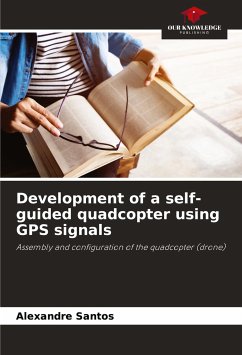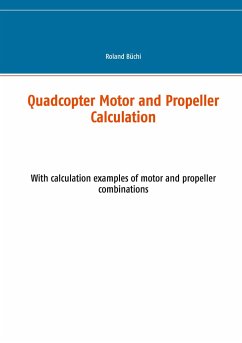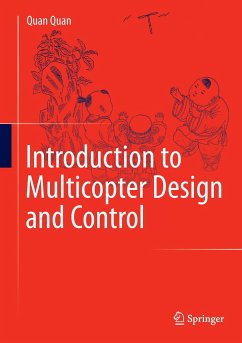
Quadcopter Physical Model, Axis and GPS Control
With understandable formulas and block diagrams

PAYBACK Punkte
0 °P sammeln!
This booklet is intended for everyone who wants to set the control parameters of a quadcopter or who works on his own projects with quadcopters. For anyone who wants to understand why a quadrocopter flies at all, or how it realizes the self-balancing, and how to choose controller parameters so that it reaches a predetermined angle of attack in nick or roll, the reading is recommended.For this purpose, the flight mechanics is first derived in the chapter 'Physical Model'. This leads to the simple model of an axis with two motors. So that a quadcopter can move in one direction, a regulation must...
This booklet is intended for everyone who wants to set the control parameters of a quadcopter or who works on his own projects with quadcopters. For anyone who wants to understand why a quadrocopter flies at all, or how it realizes the self-balancing, and how to choose controller parameters so that it reaches a predetermined angle of attack in nick or roll, the reading is recommended.For this purpose, the flight mechanics is first derived in the chapter 'Physical Model'. This leads to the simple model of an axis with two motors. So that a quadcopter can move in one direction, a regulation must be provided which brings it into an angle of attack. This is dealt with in the 'Axis Control' chapter. The drift itself is then either controlled visually by the quadcopter pilot himself or with a superimposed controller that uses GPS as a sensor. This regulation is dealt with in the chapter 'GPS Control'.There are many controller structures for quadcopters in the literature. The one discussed here was deliberately chosen so that it can be implemented with as many flight controllers as possible. In particular, the separation into a subordinate axis control and a superimposed GPS control corresponds to the state of the art in quadcopter controls.














